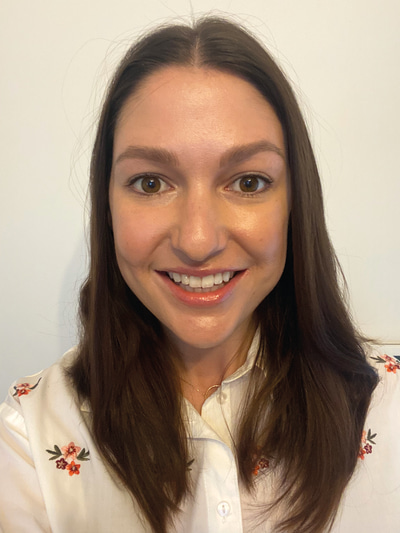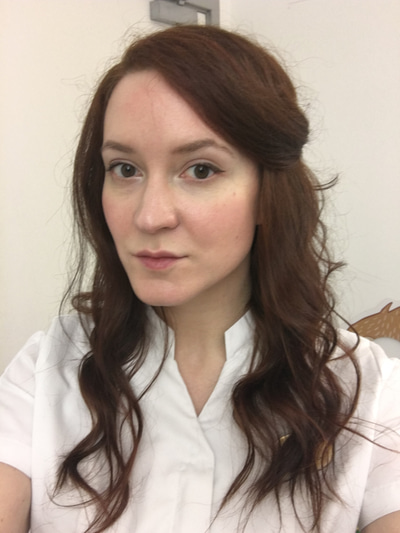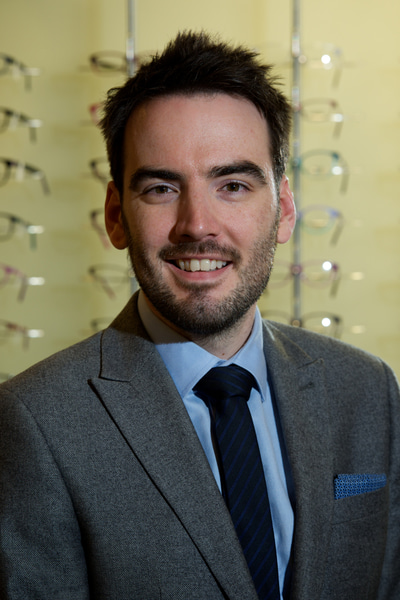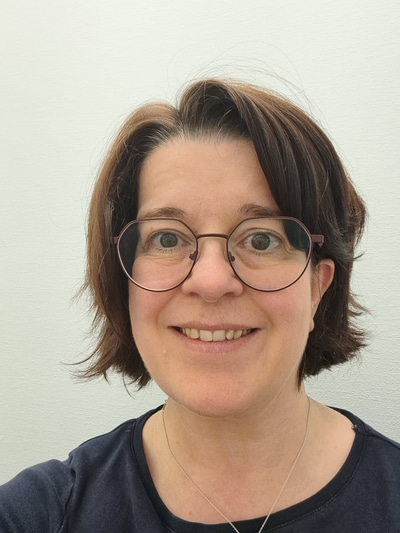- OT
- Life in practice
- Practitioner stories
- “Having that personal care is the reason patients stay with you”
The roundtable
“Having that personal care is the reason patients stay with you”
In a roundtable discussion, hosted in partnership with CooperVision, OT investigates how practitioners can optimise the soft contact lens fitting journey both inside and outside the consulting room
12 June 2023
How can optometrists ensure a smooth journey when it comes to contact lenses – both for their patients, and for the running of the practice?
The panel
- Craig McArthur, optometrist and practice owner at Peter Ivins Eyecare, Bearsden
- Jen Martin, contact lens optician at Boots Opticians, Glasgow
- Rebecca Troughton, optometrist and practice owner at Specsavers Northallerton
- Eleanor Hickman, IP optometrist at Duncan and Todd, Aberdeen.
Preparing for the patient
The first question for our roundtable participants is: what are the most important things for practitioners to consider ahead of a contact lens fitting appointment?
Independent prescribing optometrist, Eleanor Hickman, makes sure she has potentially appropriate lenses for every patient before they come in: a full trial bank, with a full range of lenses, which is regularly renewed.
“Obviously, you can’t have something for absolutely everyone, particularly patients that have got special requirements – but you can certainly have a good range of lenses in the practice,” Hickman said.
To aid this she has a discussion with every patient, whether existing or new to the practice, about their requirements and expectations ahead of their visit. Questions cover full or part-time wear, and what they are hoping to improve on. Hickman has a patient currently who only wants lenses for when she’s running, for example.
Hickman emphasised the importance of having a contact lens for the patient to try so they can get a feel for it, even if it is not the final one that they will leave with.
“If I don’t have trial lenses already, I’ll get something before they come in. It might not be the final lens, but it means we have something to try, and I think that’s a good starting point for the patient’s experience, as well as for the practice, so they don’t have too many trips back and forth,” she explained.
The aspect of contact lens fitting I could not live without is...
- Rebecca Troughton: having a stocked trial bank in the testing room ahead of the appointment
- Eleanor Hickman: ensuring I have appropriate lenses for the patient ahead of the fitting.
In Northallerton, Rebecca Troughton’s practice utilises teamwork when it comes to contact lens appointments. A contact lens optician, a contact lens manager and Troughton herself take ownership of the contact lens section of the practice diary, ascertaining whether the patient has worn contact lenses before, if there is any history, or if it is a new fit, ahead of the appointment.
A pre-visit questionnaire to identify why the contact lenses might be required allows the practice to order lenses in preparation, Troughton said.
All retail and front of house staff have been trained in the questionnaire, and it is then reviewed by a clinician who decides which lenses should be ordered.

She said: “For the maybe 10% that need amending (on the day of fitting), it is still better to experience something rather than come in and have nothing there and have to have another journey.”
Troughton also has a protocol for replenishing stock, with a ‘if you use it, replace it’ system so the lens bank does not get diminished.
“I think putting a process in place for the core team who have ownership of it has made a big difference in having everything that we need there ahead of the appointment,” Troughton said, adding that the impact on the practice is huge, cutting the amount of time wasted and making the best use of people’s skills.
She added: “I think patient experience has been significantly improved by having it in one cohesive experience in one trip.”
Craig McArthur was keen to emphasise how early preparing a contact lens patient for their appointment should start.
“The key thing is realising that the patient journey doesn’t start when the patient enters your practice, and it certainly doesn’t end when the patient leaves the practice,” he said. “It’s 2023; we've got some really clever tools at our disposal, as a business, to try and offer a more complete patient journey. You can begin communicating and educating patients before they set foot in your practice.”
“Once the patient makes the appointment, you’ve got another trigger point to communicate with them, educate them, gather information about them,” he continued. “We do this electronically before they come, with a lifestyle questionnaire to get a feel for what they’re going to be using the contact lens for: is it going to be daily, etc. That allows us to tailor the visit before they make the journey to the practice.”
He added: “In terms of contact lens patients, you’re trying to educate them a little bit and remove some of the fear of the unknown. People might be a little bit apprehensive about wearing contact lenses.”
McArthur has a sophisticated digital marketing strategy, which enables him to see how new patients came across the practice, and what they were searching for when they did so. This allows him to understand what they require – whether that is multifocals, for example, or more generic information on contact lenses – ahead of time.
“You can communicate pros and cons and options available, and even some of the pricing, before they come,” he said. “I try to demystify some of the misconceptions about contact lens wear before they come in: for example, that they can get stuck behind your eye.”
The key thing is realising that the patient journey doesn’t start when the patient enters your practice
OT asked Jen Martin about whether she finds preparing patients ahead of the visit beneficial, and what tools her practice uses to support this.
“I think it’s absolutely very beneficial to the patient, for them to know what they’re expecting, but also for us in terms of our time expectations once the patient makes it into the practice,” Martin said.
She doesn’t use a questionnaire, but phones new patients to gather information on their contact lens history ahead of the appointment. The practice’s front of house team also audits the clinic to ensure stock lenses are available.

Troughton also uses QR codes to engage patients. Even though she sees a mixed demographic of patients in North Yorkshire, she said, the majority are booking online – so having something digital to send out is helpful.
At Duncan and Todd, Hickman uses a buddy system: patients have the phone number of a member of the practice team, and are encouraged to call whenever they have a question. If they are on a contact lens trial, they also receive a phone call after the fitting to ensure they are on track.
Hickman emphasised the importance of getting the information to the patient, via whatever means necessary – whether digitally or in a more analogue way, so whatever might arise can be prepared for.
“It's about communication. If the person has booked online, you need to make sure you have everything you need,” she said. “The last thing you want is a patient turning up on the day, and you end up turning them away [without trying contact lenses]. Nobody wants that. So communication, communication, communication.”
In response to how a patient might feel if turned away without trialling contact lenses on the day of their fitting appointment Hickman added: “We know what we’re talking about. We know what a multifocal is, we know what a daily is, we know what a monthly is. But the patient just wants to be able to see. They don’t necessarily understand the complexities of what might make that difficult.”
She continued: “If they can get a pair of glasses they can see with, they should be able to get a pair of contact lenses they can see with. We all know it’s not that straightforward sometimes. It can end up being a negative conversation sometimes, if you’re not careful. I try and keep it positive: this is what we can do. We need to manage expectations.”
But the patient just wants to be able to see. They don’t necessarily understand the complexities of what might make that difficult
Non-chair time: optimising the journey
Our discussion centres on how practices can optimise the patient journey to improve their experience, and OT is interested in whether external factors, such as sustainability or the cost of living crisis, are affecting patients’ views regarding non-essential practice visits.
McArthur explained that his practice’s sustainability efforts began five or six years ago, and that in the time since it has emerged as something that both spectacle and contact lens wearers are asking about.
“Over the years we have tried to change and expand and educate patients on that,” he said.

Hickman, who has recently had an influx of new patients after a local practice stopped offering contact lens work, has convenience at the forefront of her mind due to her practice’s rural location.
Troughton, also in a rural location, is equally as happy to have remote consultations so her patients can avoid making 30 or 40-mile round trips to visit in person. It is convenience that takes priority when decisions over appointments are being made, she explained.
“From a sustainability or cost of living perspective, it’s more: ‘where do your contacts go? How do we dispose of them? Is there a recycling scheme in store?’ I’ve had an increase in interest in that, and we’ve got recycle drop-offs in store,” she said.
Working in Glasgow city centre, Martin also believes changes in patient behaviour come from a need to maximise time.
“It’s almost a time poverty thing, rather than the money side of things,” she said. “There are a lot more people interested in whether they can have remote consultations, and how we can send things out.”
Troughton added: “Having that flexibility is probably the most crucial thing. It has to be patient-centred, because that’s the whole point.”
I ask how the practitioners have streamlined their processes in order to cut down on additional practice visits for contact lens wearers.
The staff in Troughton’s practice are almost all trained to teach contact lens fitting, she explained, meaning that concerns about extra practice visits (for application and removal) are almost non-existent – patients go away with all the information they need after their initial visit.
“It’s doing the teach there and then, and having all the samples ready,” she said. “That replenishment of the stock bank means that, at the very least, somebody is going to get enough lenses to try out.”
Troughton continued: “If they try them and they like them, they can sign up to have a delivery straightaway. They don’t need to come back in to check. In an ideal world, somebody will see us once and that should be the ball rolling from there.”
She makes an exception for nervous patients who might benefit from a second teach, or for more complex cases – such as a recent RGP wearer with nystagmus.
If they try them and they like them, they can sign up to have a delivery straightaway. They don’t need to come back in to check. In an ideal world, somebody will see us once and that should be the ball rolling from there
To help prevent additional patient visits, Martin’s practice ensures that at least two people with application and removal training are on the shop floor every day, and that everyone knows who is going to be responsible for each patient as they come in.
“We’re trying to keep it out of the clinic and make sure it’s a very streamlined process for the shop floor staff,” she said.
Clinical time being lost to contact lens teaches is something that is to be avoided where possible, Martin added – something that also helps bring the rest of the practice team into the conversation.
McArthur advised having a diary for contact lens teaches alongside the regular practice diary, and using a morning meeting to ensure that enough appropriately trained staff members are available.
In terms of utilising front of house staff to support the handling and experience of contact lenses for new wearers once they have left the practice, McArthur also uses a buddy system. Avoiding drop-out is something the practice focuses heavily on, he said.
“There are lots of touch points along the patient journey, where the contact lens buddies are the patients’ point of contact,” McArthur explained. “Our front of house support staff are key to making that work.”
He continued: “The entire team is involved – it could be a dispensing optician or a clinical assistant. The contact lens buddy conducts the teaching session with some technology alongside, for example the Captiv8 platform – so they’ll have [application and removal] videos to aid the teaching session. They’ll then send those videos on to back things up. They will also call the patient the next day, to try and iron out any teething problems in the first 24 hours.”
A follow-up is scheduled within two weeks, McArthur said, adding: “We try to baby them through that delicate initial period of contact lens wear, because we know dropout is really high in the first couple of months.”
He noted that: “Sometimes an unhappy patient views you negatively. You might lose them as a patient if you fail to fit them with the contact lens.”
McArthur added: “These patients are really valuable, once you get them through that initial period. A long-term contact lens patient, to us, is more than twice as valuable as a spectacle wearer.”
There are a lot more people interested in whether they can have remote consultations, and how we can send things out
In the chair
How do our practitioners ensure a good patient experience while they’re in the practice?
Although Hickman would not insist on seeing a patient in person before ordering contact lenses, she emphasised the need to gather all the required information before the decision to order is made.

Hickman doesn’t always aim for perfection in contact lens fitting, she said: “I try and compare what they’re seeing with their contact lenses with what they see without any glasses, rather than comparing it to whatever they’re getting with their glasses.”
She added: “For example, my lady who wants to go running – all she wants is to not bump into the big logs, and to be able to see her smartwatch.
“You’re tailoring that recommendation, that first lens that has been ordered, to that person’s needs and wants and desires, rather than trying to get them A1 perfect, necessarily.”
Being unprepared for a patient who has travelled to the practice and possibly built-up anticipation to try contact lenses is unfair and would inevitably lead to disappointment, Hickman emphasised.
Troughton agreed that the key to contact lens patient satisfaction is in the communication offered by the optometrist.
“A positive experience is not necessarily, ‘I can see perfectly the minute I put a lens in,’” she said. “A positive experience is that the person feels they were given an opportunity and that if they leave without what they wanted, they understand why and that you’ve given them your time and understanding.”
She added: “They can still come out a happy patient, because you tried. Managing expectations is in there, along with managing disappointment.”
Martin agreed that fitting successfully in the first fitting appointment is not always possible.I think patient experience has been significantly improved by having it in one cohesive experience in one trip
"We’re always going to get outlier prescriptions where we’re not going to have anything even vaguely suitable to put in the eye,” she said, adding, however, that patients will leave satisfied “as long as they know what we’re doing and why we’re not giving something that’s not going to be adequate.”
Are there certain patients that our panel would feel comfortable fitting in a single appointment?
Troughton believes that the choice to fit on day one depends as much on the type of lens as it does on the patient themselves – Troughton would consider the chance of infection with daily disposables, for example, or whether it is a low-risk lens.
Patient choice is the main thing, she said, although her confidence in fitting on the day will be improved “if they’re competent in their teach and they ask all the right questions, we’ve given them written information to support, they know we’re there seven days a week to get in touch, and we’ve got that rapport with them.”
Whether you’re having that conversation face to face or whether you’re having it remotely, it’s important the conversation is had. Having that personal care is the reason patients stay with you. It’s an invaluable follow-up
Hickman will also consider whether the patient has a history of contact lens wear.
“With an existing wearer, I am quite comfortable with signing them off in a single appointment, because they know when things aren’t right,” she explained. “They tend to get back in touch quite readily if they’re not happy about something. I’m a bit more anxious about a new fit. They get a lot of information all at once.”
Follow-up calls are essential to consolidate what these patients know, she said.
Troughton agreed: “Whether you’re having that conversation face to face or whether you’re having it remotely, it’s important the conversation is had. Having that personal care is the reason patients stay with you. It’s an invaluable follow-up.”
She added: “Giving the patient the choice [of having a face to face or remote post trial follow-up] is the way I go. Even if I think I know what’s going to suit their lifestyle, patients make their own decisions [about how they receive their care].”
Craig McArthur’s digital marketing strategy for attracting contact lens patients
McArthur says that the patient journey starts as soon the practice markets to them. His practice does this via targeted search engine optimisation (SEO), including website landing pages for specific key words, and blogs.
“You have to be absolutely laser-focused,” he said. “We set up geographical areas: realistically, who we are aiming to capture within a certain radius of our practice. Then we look at the number of keywords that have been searched, keyword density, and then target those.”
He added: “All the language and information has to be tailored to that specific keyword. There’s no point teaching someone about multifocals if they’re 24. You can gather information: male or female, their age, their education status. You can tailor your language.”
“We’ve got a lot more elaborate in how we generate these information campaigns.”
After their information is gathered, potential patients are engaged via texts and emails, with a simple call to action to book an appointment.



Comments (0)
You must be logged in to join the discussion. Log in